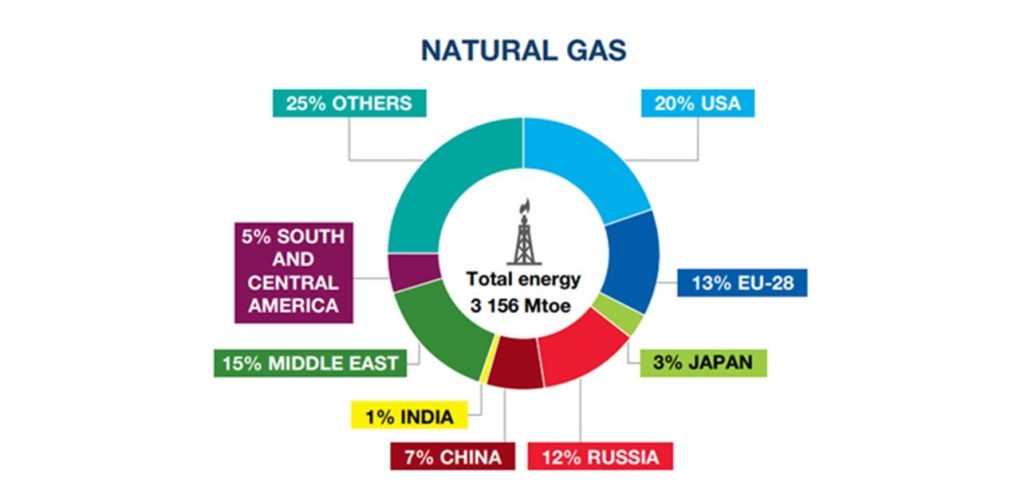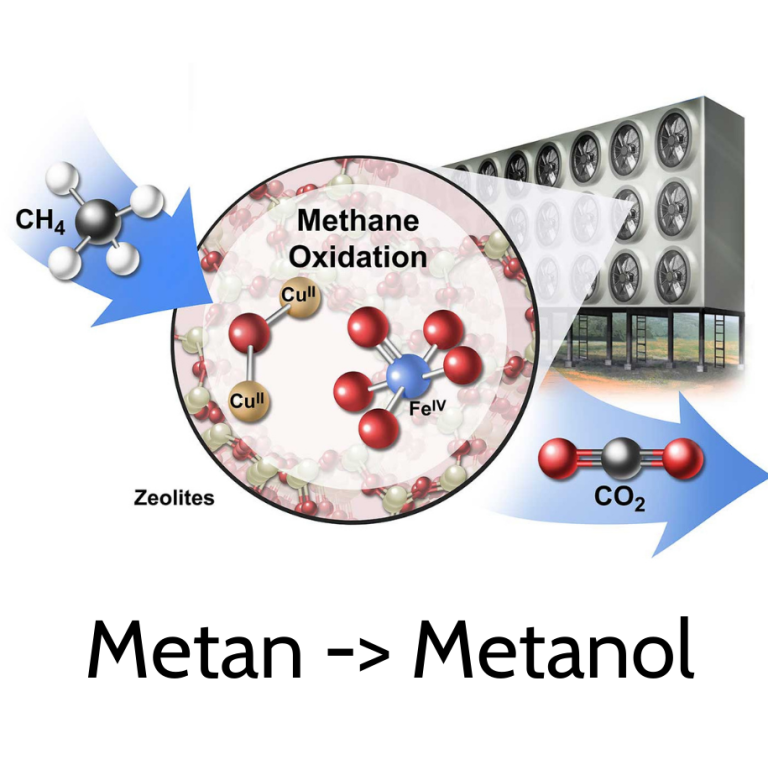“The world lacks cheap technology for processing extracted methane and at the same time the demand for methanol produced from it is growing significantly,” explains Jiří Dědeček, head of the research team at the J. Heyrovský Institute of Physical Chemistry of the CAS. “However, its handling is much more complicated than in the case of oil.”
The global methanol market is very interesting commercially and analysts predict further growth. China is currently the top consumer of methanol, with its use in the chemical industry.
Jiří Dědeček’s team has created and described new unique reaction centres that can activate oxygen in a previously unknown way – by splitting it. This split oxygen can then be used to oxidise methane to methanol. Direct oxidation by molecular oxygen is an ideal way to significantly reduce the cost of methanol production, bringing mankind closer to technologies for producing cheaper fuels and many other industrial applications.
“The goal is clear: to apply and evaluate the scientific result, ideally in the form of a license, and to find funding for Proof of Concept research.”
The scientists are cooperating with the Centre for Technology Transfer of the CAS to find ways to apply the new method in practice. Negotiations with potential partners are already underway thanks to a clear brochure in English that highlights the commercial potential of the technology. The goal is clear: to apply and evaluate the scientific result, ideally in the form of a licence, and to find funding for Proof of Concept research (verification that a theory or principle has practical potential). In this, the technology will be validated on an industrial scale in giant refineries.
The biggest players in the petrochemical industry and mining companies are in the game
“The compact and simple method of converting cheap methane into much more useful methanol has a huge potential and a great chance to attract partners who will financially participate in the completion of the research,” says Jiří Kavan from the Centre for Technology Transfer of the CAS. “We are looking for investors mainly among manufacturers of catalysts and related technologies, but also among the biggest players in the petrochemical industry and mining companies.”
“We are currently also looking for partners who will help the project with the protection of intellectual property, specifically they will be interested in the option for an international patent, identify countries for which we should nationalize the international patent application, and also partners for Proof of Concept research,” explains Jiří Kavan.
Competition from Switzerland and Norway
Technology maturity according to the TRL (technology readiness level) scale is at level 3 out of a nine-level scale. The technology has therefore been validated on a laboratory scale and is awaiting prototyping and introduction into industrial production. This stage of knowledge transfer can be costly and investment protection is thus one of the motivations for international patent applications.
But the Czechs are not alone in this race. A very similar research challenge is being tackled by competitors from Switzerland and Norway, by the ETH Zurich research consortium working with industry giant Shell, and by teams around Haldor Topsoe AS and their research partners from Scandinavian universities. They are also seeking investor interest and commercial exploitation of the result.
A team of researchers from the J. Heyrovsky Institute of Physical Chemistry of the CAS received the Czech Head 2020 Award in the Invention category for their discovery. The competition is announced annually by the Czech Head Society together with the Office of the Government of the Czech Republic. The scientists also successfully presented their research results at the 12th Symposium on Natural Gas Conversion in the USA, the 19th International Zeolite Conference in Australia and the Forum for the Development of Innovative Catalysis in Germany.
“Transfer is a long haul. We believe,” say scientists and transfer researchers in unison, “that the discovery could be used as the basis of a technology. With this discovery, we have opened up the possibility of developing the technology to use methane. But the development itself may take another five or ten years.”

COOPER, John. Refining products for our everyday life [online]. B.m.: FuelsEurope. 2019 [accessed 2021-01-27]. Source here.

Methanol Market Size, Analysis & Trends – Industry Report, 2019-2026. Polaris Market Research [online]. 2019 [accessed 2021-01-27]. Source here.




